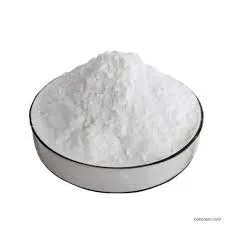- Afrikaans
- Albanian
- Amharic
- Arabic
- Armenian
- Azerbaijani
- Basque
- Belarusian
- Bengali
- Bosnian
- Bulgarian
- Catalan
- Cebuano
- Corsican
- Croatian
- Czech
- Danish
- Dutch
- English
- Esperanto
- Estonian
- Finnish
- French
- Frisian
- Galician
- Georgian
- German
- Greek
- Gujarati
- Haitian Creole
- hausa
- hawaiian
- Hebrew
- Hindi
- Miao
- Hungarian
- Icelandic
- igbo
- Indonesian
- irish
- Italian
- Japanese
- Javanese
- Kannada
- kazakh
- Khmer
- Rwandese
- Korean
- Kurdish
- Kyrgyz
- Lao
- Latin
- Latvian
- Lithuanian
- Luxembourgish
- Macedonian
- Malgashi
- Malay
- Malayalam
- Maltese
- Maori
- Marathi
- Mongolian
- Myanmar
- Nepali
- Norwegian
- Norwegian
- Occitan
- Pashto
- Persian
- Polish
- Portuguese
- Punjabi
- Romanian
- Russian
- Samoan
- Scottish Gaelic
- Serbian
- Sesotho
- Shona
- Sindhi
- Sinhala
- Slovak
- Slovenian
- Somali
- Spanish
- Sundanese
- Swahili
- Swedish
- Tagalog
- Tajik
- Tamil
- Tatar
- Telugu
- Thai
- Turkish
- Turkmen
- Ukrainian
- Urdu
- Uighur
- Uzbek
- Vietnamese
- Welsh
- Bantu
- Yiddish
- Yoruba
- Zulu
marras . 05, 2024 07:22 Back to list
enrofloxacin injection for dogs
Enrofloxacin Injection for Dogs An Overview
Enrofloxacin is a broad-spectrum antibiotic belonging to the fluoroquinolone class, primarily used in veterinary medicine for the treatment of bacterial infections in dogs. Its efficacy against a wide range of pathogens, including both gram-positive and gram-negative bacteria, makes it a critical tool in managing various infectious diseases in canine patients. This article aims to provide an overview of enrofloxacin injection, its uses, administration, and considerations for dog owners and veterinarians alike.
Uses of Enrofloxacin
Enrofloxacin is indicated for the treatment of several bacterial infections in dogs, including those affecting the skin, urinary tract, respiratory system, and gastrointestinal tract. It is particularly effective against Pseudomonas aeruginosa, Escherichia coli, and Staphylococcus species, which are commonly implicated in serious infections. Moreover, it may be used in cases of pneumonia, pyoderma, or osteomyelitis where conventional antibiotics may prove ineffective due to resistance concerns.
The swift action of enrofloxacin is one of its significant advantages. After administration, the drug is rapidly absorbed into the bloodstream and reaches peak plasma concentrations within a few hours. This allows for prompt therapeutic effects, which can be crucial in treating severe or life-threatening infections.
Administration and Dosage
enrofloxacin injection for dogs

Enrofloxacin is typically administered through an injection, often given intravenously or intramuscularly, depending on the severity of the infection and the veterinarian's professional judgment. The dosage of enrofloxacin varies based on the dog's weight, the type of infection, and the overall health status of the animal. It is essential for pet owners to follow their veterinarian’s instructions carefully regarding dosage and administration to ensure the effectiveness of the treatment and minimize side effects.
Safety and Side Effects
Although enrofloxacin is generally well-tolerated by dogs, potential side effects can occur. Some common side effects may include vomiting, diarrhea, and loss of appetite. In rare cases, more severe reactions can occur, such as changes in behavior, seizures, or signs of tendon damage, particularly in younger or growing dogs. Therefore, it is crucial to monitor the dog’s response to the treatment and report any concerning symptoms to a veterinarian immediately.
Enrofloxacin is contraindicated in certain conditions. For example, it should not be administered to dogs with known hypersensitivity to the drug or other fluoroquinolones. Additionally, caution is advised when prescribing this antibiotic to young, growing dogs, as high doses may affect bone development.
Conclusion
Enrofloxacin injection is a powerful antibiotic option for managing bacterial infections in dogs. Its broad-spectrum activity, rapid absorption, and effectiveness make it a valuable resource for veterinarians in treating various conditions. However, pet owners must work closely with their veterinary team to ensure the safe and effective use of this medication. This includes adhering to prescribed dosages, being vigilant for side effects, and maintaining open communication with a veterinarian throughout the treatment process. As with any medication, responsible use is key to achieving optimal outcomes and ensuring the health and well-being of beloved canine companions.
-
Guide to Oxytetracycline Injection
NewsMar.27,2025
-
Guide to Colistin Sulphate
NewsMar.27,2025
-
Gentamicin Sulfate: Uses, Price, And Key Information
NewsMar.27,2025
-
Enrofloxacin Injection: Uses, Price, And Supplier Information
NewsMar.27,2025
-
Dexamethasone Sodium Phosphate Injection: Uses, Price, And Key Information
NewsMar.27,2025
-
Albendazole Tablet: Uses, Dosage, Cost, And Key Information
NewsMar.27,2025













